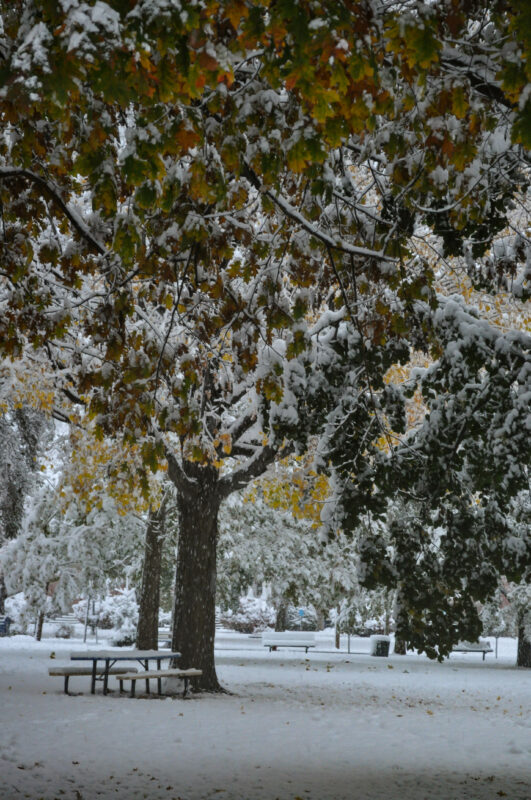Blog, Home Gardening Tips, Plant Health Care
How to help your trees deal with unseasonable weather
As homeowners, we take pride in our properties and the accompanying foliage. With unpredictable weather patterns, you may wonder what you can do to help your trees cope with unseasonable weather. Just like us, trees don’t always adjust well to sudden change. We’ll discuss how unpleasant weather can affect your beloved trees and useful insights on what you should do to protect them from these environmental shifts.
The consequences of unseasonable weather and fluctuating temperature
Unseasonable weather and fluctuating temperatures have consequences for your trees, including:
- Early budding
- Dieback of new growth
- Leaf browning
- Leaf drop
- Sudden death
The fluctuating temperatures can also confuse trees, causing them to leave dormancy early.
Keep your trees mulched
Keeping your trees mulched is essential to ensure they remain healthy despite unseasonable weather occurrences. It also guards against weeds and pests by providing a barrier between them and the plant’s roots. Spread a layer of mulch two to four inches thick for best results, making sure not to pile it up against the trunk.
Provide extra protection for evergreens
Some evergreen species, especially broadleaf evergreens like holly and southern magnolia, are susceptible to desiccation in the winter. Cold, dry conditions may draw water from plant material and cause them to rapidly brown up, in which they cannot rebound. Anti-desiccant (or anti-transpirant) products can be applied in the fall to coat leaf tissue, protecting these trees from this occurring.
Keep your trees pruned
Pruning is a key part of any tree care routine. It helps your tree look its best, encourages strong, healthy growth, and enables it to withstand stormy weather and unseasonably cold temperatures.
Get your trees assessed by a professional ISA Certified Arborist
Investing in an ISA Certified Arborist from Hansen’s Tree Service to assess your trees is sound advice for any homeowner or a business owner. An arborist can identify potential problems and risks associated with the tree, such as deadwood, decay, pest infestations, structural deficiencies, and potential hazards.
Furthermore, they can recommend treatments that help maintain the tree’s health and extend its life—especially during unseasonable weather.
